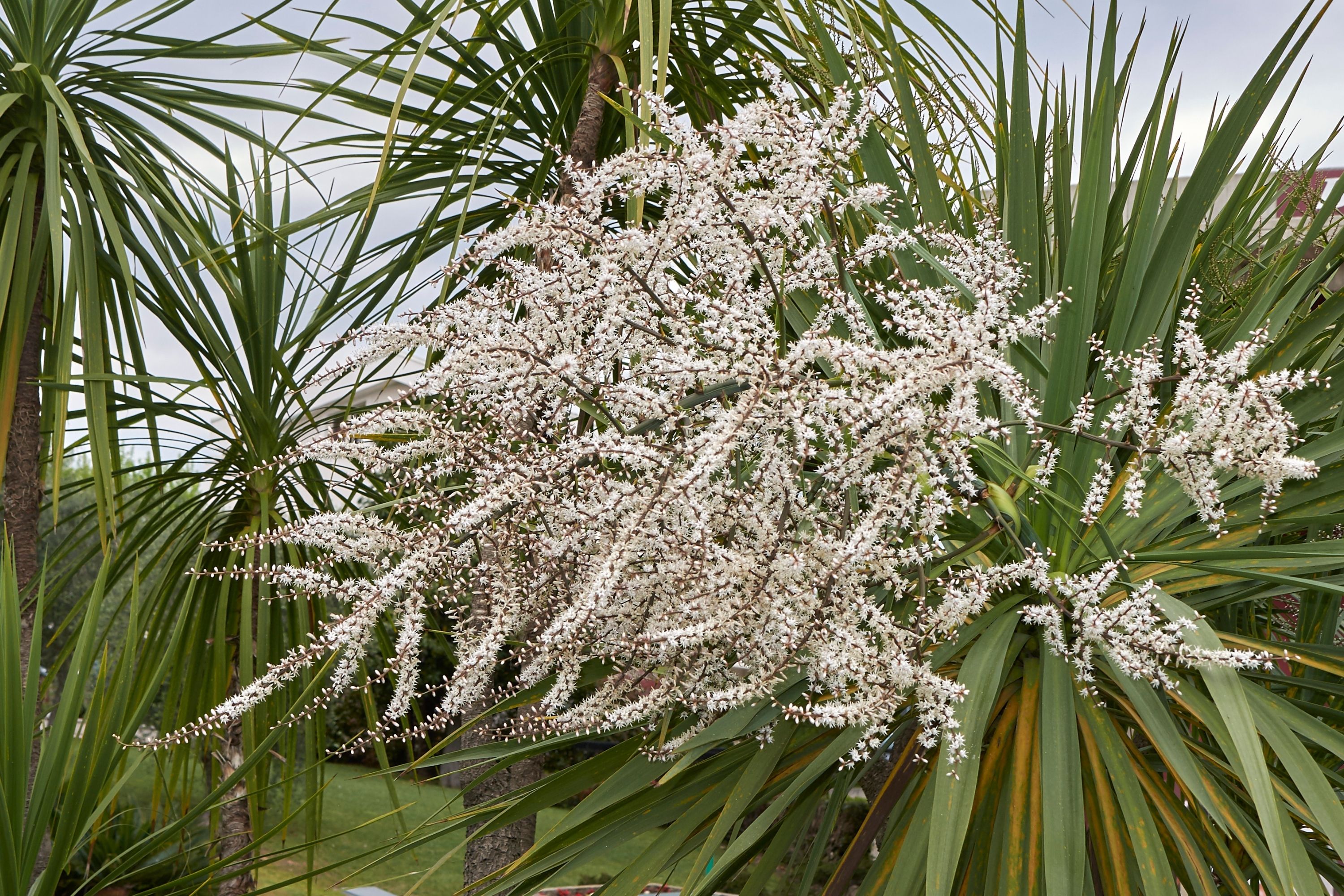Cabbage tree
(Cordyline australis)

Description
Cordyline australis is an iconic plant species that is native to New Zealand. It is a hardy, evergreen plant that is well-known for its striking foliage and architectural form. The plant is commonly known as the cabbage tree, and it has been used by the Maori people for various purposes, such as food, medicine, and clothing. In this article, we will explore the different aspects of Cordyline australis, including its botanical features, cultivation requirements, uses, and benefits. Botanical Features Cordyline australis belongs to the Asparagaceae family and the Cordyline genus. The plant is characterized by its long, narrow, sword-like leaves that are arranged in a rosette at the top of a single trunk. The leaves can grow up to 1 meter in length and are typically green in color. However, cultivars with variegated leaves, such as 'Albertii' and 'Red Star,' are also available. The plant produces fragrant, white flowers that are arranged in large panicles. The flowers bloom in late spring to early summer and are followed by small, spherical, black or blue-black fruits. Cultivation Requirements Cordyline australis is a hardy plant that is relatively easy to grow. The plant prefers a sunny or partly shaded location and well-draining soil. It can tolerate a wide range of soil types, including sandy, loamy, and clay soils, but it prefers slightly acidic to neutral soil pH. The plant is tolerant of drought and can withstand periods of dryness. However, it requires regular watering during its establishment period and prolonged dry spells. It is also important to ensure that the soil around the plant is not waterlogged, as this can lead to root rot. Cordyline australis can be propagated by seeds or stem cuttings. Seeds should be sown in spring or summer, and stem cuttings should be taken in spring or autumn. The plant can also be propagated by air-layering or division. Uses Cordyline australis has a wide range of uses, both practical and ornamental. The plant is commonly used as a feature plant in gardens and landscapes due to its striking foliage and architectural form. It is also used as a specimen plant in containers and as an indoor plant. In addition to its ornamental uses, Cordyline australis has been used by the Maori people for various purposes. The young leaves of the plant were used as a food source and were also used to make clothing and fishing lines. The roots of the plant were used to make a medicine for treating skin diseases and stomach complaints. Benefits Cordyline australis has several benefits, including its ability to improve air quality. The plant is known to absorb pollutants such as benzene, formaldehyde, and trichloroethylene from the air, making it a useful addition to indoor spaces. In addition to its air-purifying abilities, Cordyline australis is also beneficial to wildlife. The plant produces flowers and fruits that attract birds and insects, providing a valuable source of food for these creatures. Conclusion Cordyline australis is a hardy, evergreen plant that is known for its striking foliage and architectural form. It is a popular ornamental plant that is easy to grow and has a wide range of uses. In addition to its ornamental value, Cordyline australis has several benefits, including its ability to improve air quality and its value as a food source for wildlife. Whether you are a gardener or a plant enthusiast, Cordyline australis is a plant species that is well worth considering.
Taxonomic tree:







